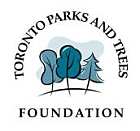
Pages in this Folder:

Related Folders:
See also Department Site Map
This website was developed in 2001 thanks to a grant from the Toronto Parks and Trees Foundation.

Notice: This web site is an information post and a forum for the community that uses the park, and to some degree for the surrounding neighbourhood. The editor of the web site reserves the right to post parts or all of any letters sent to the web site. If you do not want your letter posted, please let us know when you e-mail us, and we won't post it.
Comments?
For the basics, see
- Website & Privacy Policies
- How To Get Involved
- The Role of the Park
Search options:
Department Site Map
Custodians:
Feb.6 meeting follow-up post #6
6. Design: No clubhouse
DTAH’s alternative design proposals for the rinkhouse – based on the instructions they got from the city planners at Capital Projects – are NOT for a clubhouse. The line item in the city’s capital budget is called “Dufferin Grove New Community Centre.”
Community Centre is a technical term that the city’s Parks, Forestry and Recreation division uses for what they also call “facilities”— places like this: https://dsai.ca/projects/parkway-forest-community-centre/. In such community centres there are always one or more offices. There’s often a front desk with a trained “customer service” staff person, an institutional kitchen, and various “multi-purpose” rooms with (mostly) pre-registered fee-based programs. The common areas tend to be set up like waiting rooms.
All five of DTAH’s alternative proposals for Dufferin Grove call for an office with a “point-of-sale” window, a long hallway with lockers for skate changing, an institutional-style kitchen, and one or several multi-purpose rooms that could be used to offer registered summer camps or be rented out for private events. DTAH says that the new building will be “purpose-built.”
Both DTAH and the Capital Projects staff have said that one of the city’s problems with the clubhouse is that it was not purpose-built for what’s been going on there. They’re quite right. The building is a long unspectacular rectangle that perfectly fits urban thinker Jane Jacobs’ call for buildings that can be made useful for and by the people who use them, and then changed again if different uses develop there.
The rink house was a kind of orphan at the start. It was locked during the 8 months of the year when the ice wasn’t in. The city wasn’t much interested in it during the rink season either. That out-of-the-way-ness gave the building the chance to become a “clubhouse.” It was gradually turned into a staging area for a crazy-quilt of experiments carried out all over the park. There was support for these experiments in the 1990s from the top (Director Mario Zanetti and Mayor Barbara Hall). In the 15 or so years that followed, there was a constantly shifting collaboration of park friends and park staff, with support from the middle (especially, but not only, from recreation supervisor Tino DeCastro). The park friends ranged in age from 5 to 75 (one of the original leaders, Fabio Tavares, was 9 when the whole thing began). The mix included El Salvadorian gangster youth, puppeteers, shinny-playing engineers, newcomers from far-away countries trying to find a foothold, and long-time residents who remembered when Gladstone Ave. still ran through the park and you could drive cars really fast along that stretch.
The clubhouse was a point of intersection. No designers were involved. Early on, the office was turned into a kitchen, and then another kitchen was added in an unused alcove in the garage. The kitchens were used by whoever was cooking, mostly by city staff but also by kids helping to make cookies or by a hockey dad because he just felt like cooking pancakes for skaters on a Saturday morning. The big room with the wood stove jumbled everybody together in winter – skaters, neighbours catching up on news, card players, troubled youth with attitude, staff, parents and toddlers warming up from tobogganing, farmers on Thursdays. (The stories it could tell!)
Over the past 8 or 9 years, that jumble has gradually been sorted out by Parks and Rec management, and boundaries between staff and “patrons” or “customers” have been clarified. (I’ll write more about that in a later post.) DTAH’s purpose-built designs are needed to firm up those boundaries. That’s why the design alternatives – no matter whether the rink house stays in the same spot or is moved to the east or the north side of the rinks – all look like small versions of the city’s standard community centres. No clubhouse there.
Back to the front page of Feb.6 meeting follow-up posts


 Printer friendly version
Printer friendly version